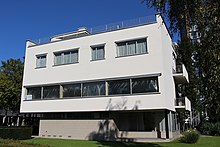
Rotterdam is the second-largest city in the Netherlands after the national capital of Amsterdam. It is in the province of South Holland, part of the North Sea mouth of the Rhine–Meuse–Scheldt delta, via the "New Meuse" inland shipping channel, dug to connect to the Meuse at first and now to the Rhine.

The Hague is a city and municipality of the Netherlands, situated on the west coast facing the North Sea. The Hague is the capital of the province of South Holland. The Hague is the country's administrative centre and its seat of government, and while the official capital of the Netherlands is Amsterdam, The Hague has been described as the country's de facto capital.
The year 1993 in architecture involved some significant architectural events and new buildings.
The Museum Card, also known as the Museumkaart in Dutch, is a personal card that grants free entry to approximately 400 museums in the Netherlands for one year. It is available for purchase at many of the larger participating museums or online, with a temporary card issued when purchased from the museum. While most museums offer free entry to Museum Card holders, some museums may charge an additional fee for special exhibitions, but not for general collections.

The Netherlands Architecture Institute (NAI) was a cultural institute for architecture and urban development, which comprised a museum, an archive plus library and a platform for lectures and debates. The NAI was established in 1988 and was based in Rotterdam since 1993. It ceased to exist in 2013, when it became part of Het Nieuwe Instituut.

Museumpark is an urban park in Rotterdam, Netherlands, located between the Museum Boijmans Van Beuningen, Westersingel, Westzeedijk and the complex of the Erasmus MC, a medical centre affiliated with the Erasmus University.
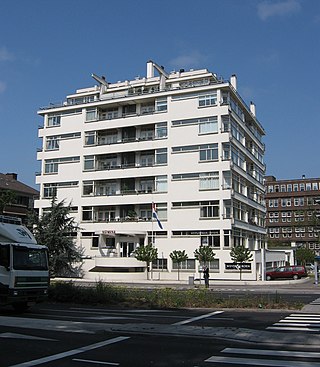
Nieuwe Zakelijkheid, translated as New Objectivity or New Pragmatism, is a Dutch period of modernist architecture that started in the 1920s and continued into the 1930s. The term is also used to denote a (brief) period in art and literature. Related to and descended from the German movement Neue Sachlichkeit, Nieuwe Zakelijkheid is characterized by angular shapes and designs that are generally free of ornamentation and decoration. The architecture is based on functional considerations and often included open layouts that allowed spaces to be used with flexibility. Sliding doors were included in some of the designs.

The former Van Nelle Factory on the Schie in Rotterdam, is considered a prime example of the International Style based upon constructivist architecture. It has been a designated UNESCO World Heritage Site since 2014. Soon after it was built, prominent architects described the factory as "the most beautiful spectacle of the modern age" and "a poem in steel and glass".

The KNSM Island is a man-made island in the Eastern Docklands of Amsterdam. KNSM stands for the Koninklijke Nederlandsche Stoomboot-Maatschappij, the Royal Dutch Steamboat Shipping company which used to have its headquarters and its docks on the island. It is now a large residential area containing modern architecture with a mostly well-off population.

The Blauwe Theehuis is a 1930s Modernist pavilion in the Vondelpark in Amsterdam, the capital city of the Netherlands. It is a ring-shaped building, somewhat reminiscent of a flying saucer. Originally a tea house, it is in use as a café and restaurant, surrounded by outside seating. The Blauwe Theehuis is also used for theatre performances, festivals, weddings, and other events. The building has rijksmonument status.
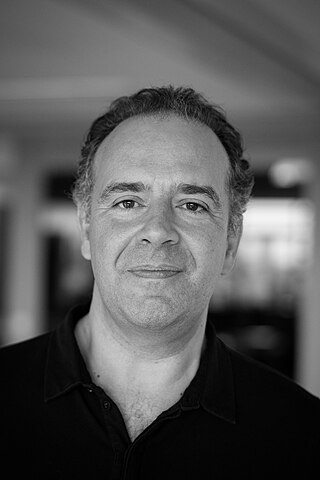
Michiel Riedijk is a Dutch architect and professor at the Technical University Delft. He is co-founder of the architecture office Neutelings Riedijk Architects in Rotterdam, Netherlands.
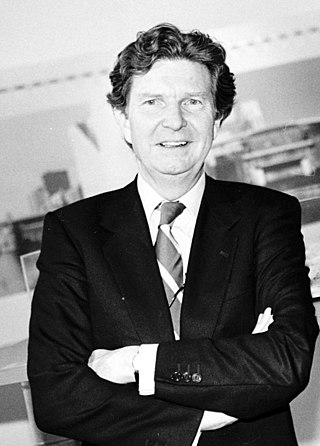
Hubert-Jan Henket is a Dutch architect. He is a specialist in the relations between old and new buildings, the redesign of buildings, renovation and restoration. He is the founder of DOCOMOMO international.
Benthem Crouwel Architects is a Dutch architectural firm founded in 1979 by Jan Benthem and Mels Crouwel. Today, partners Pascal Cornips, Daniel Jongtien, Saartje van der Made and Joost Vos lead an international team of 60 professionals at the Amsterdam based Benthem Crouwel LAB. They work on projects from Amsterdam, Paris and California.

Pieter Adriaan Jacobus "Piet" Moojen was a Netherlands-Indies architect, painter and writer. He studied architecture and painting in Antwerp. He lived and worked in the Dutch East Indies from 1903 to 1929. He was one of the first architects to implement Modernism in the Dutch East Indies. Moojen became widely known for his work on the Dutch entry at the Paris Colonial Exposition in 1931. He was active as an architect between 1909 and 1931.

Berend Strik is a Dutch visual artist working and living in Amsterdam.

Martine Theodora Bax is a Dutch-Canadian art historian and art critic in modern art. Her specializations are the work of Piet Mondrian and the relationship between art and Western Esotericism, especially Modern Theosophy and Anthroposophy.
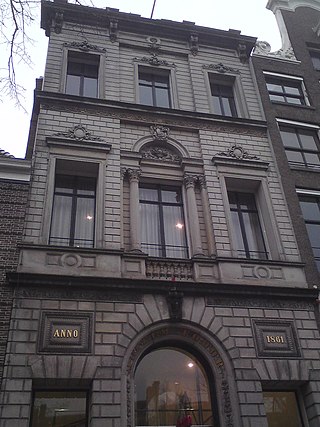
The Netherlands Design Institute is a former institute for the promotion of design in the Netherlands. It was located in the premises of the former Museum Fodor at Keizersgracht in Amsterdam. Its mission was to stimulate high quality design in the Netherlands, to stimulating the interest in it, and to encouraging discussion about the profession.
The Premsela Dutch Platform for Design and Fashion was a Dutch institute for the promotion of design and fashion in the Netherlands from 2002 to 2013.
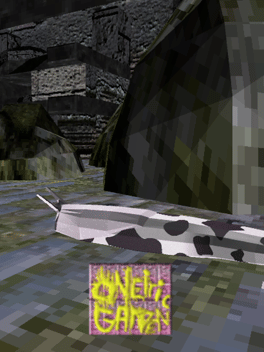
Oneiric Gardens is a 2014 video game by Cicada Marionette, the pseudonym of independent video game developer Lilith Zone. Described as a game depicting a "series of chambers drawing from half-remembered spaces (and) feelings," Oneiric Gardens is open-ended adventure game in which the player explores surrealistic spaces. The game received positive attention from critics as a surrealistic work and led to Lilith's exhibition of the game and engagement in the Dutch contemporary art space through MAMA Rotterdam and Het Nieuwe Instituut.


